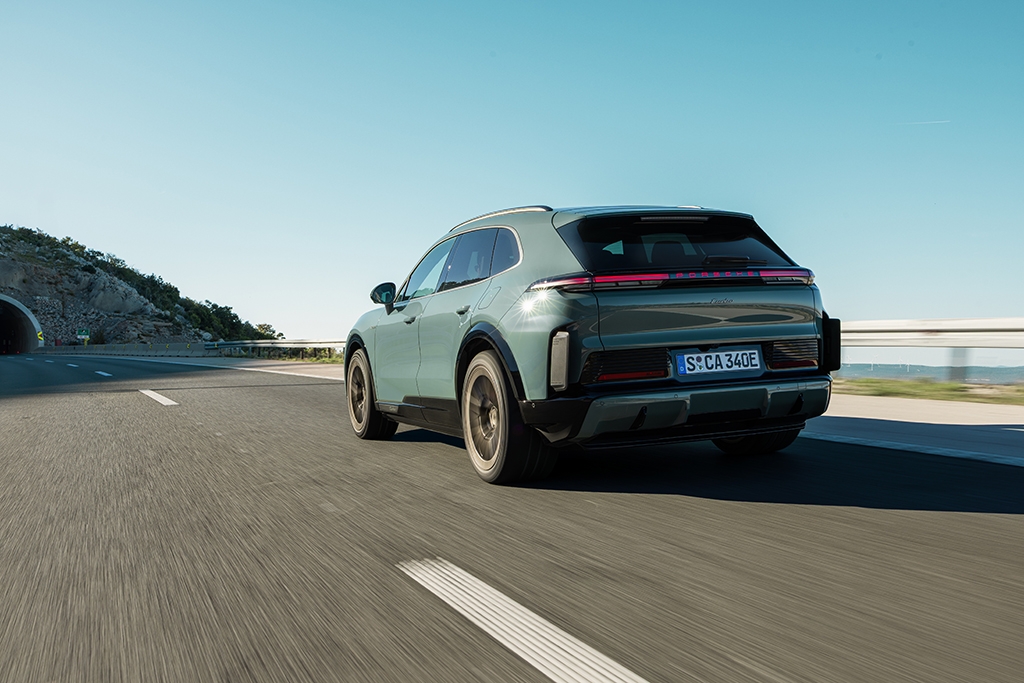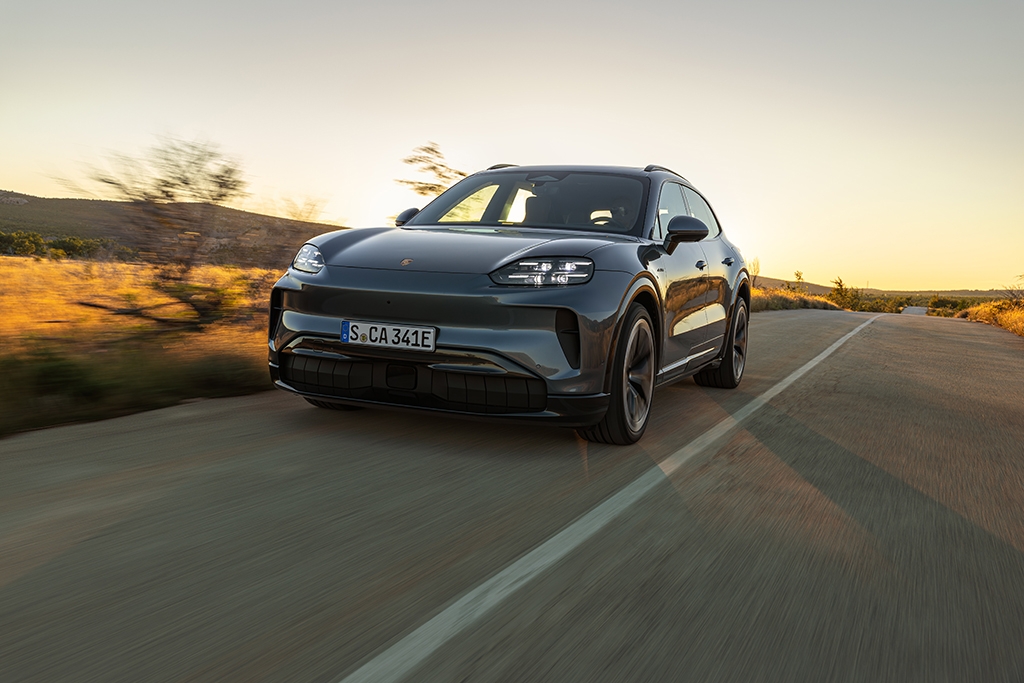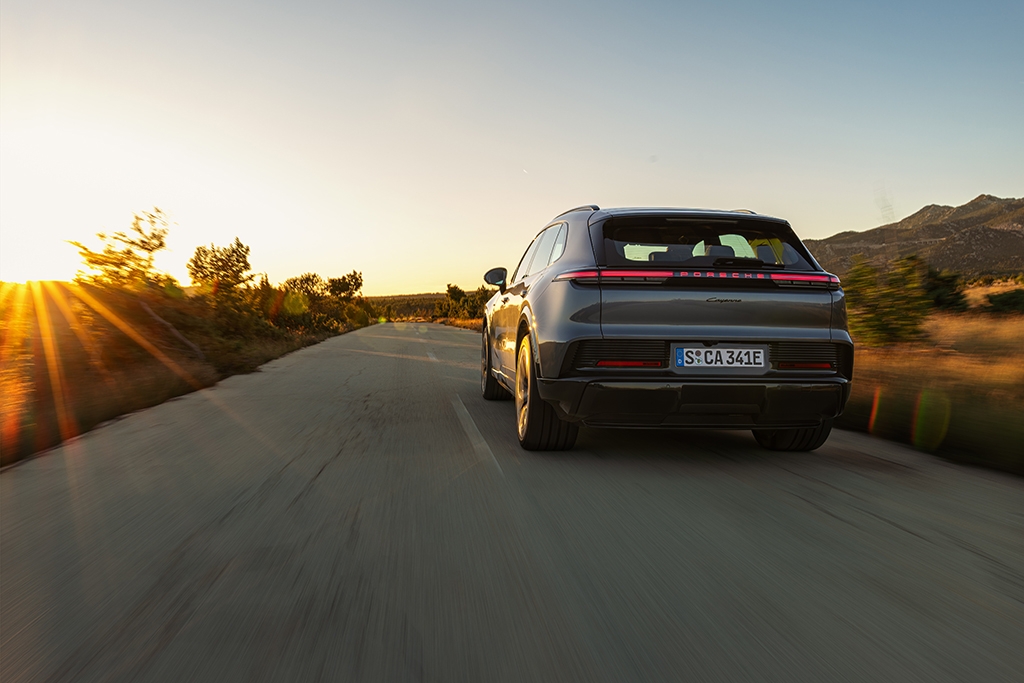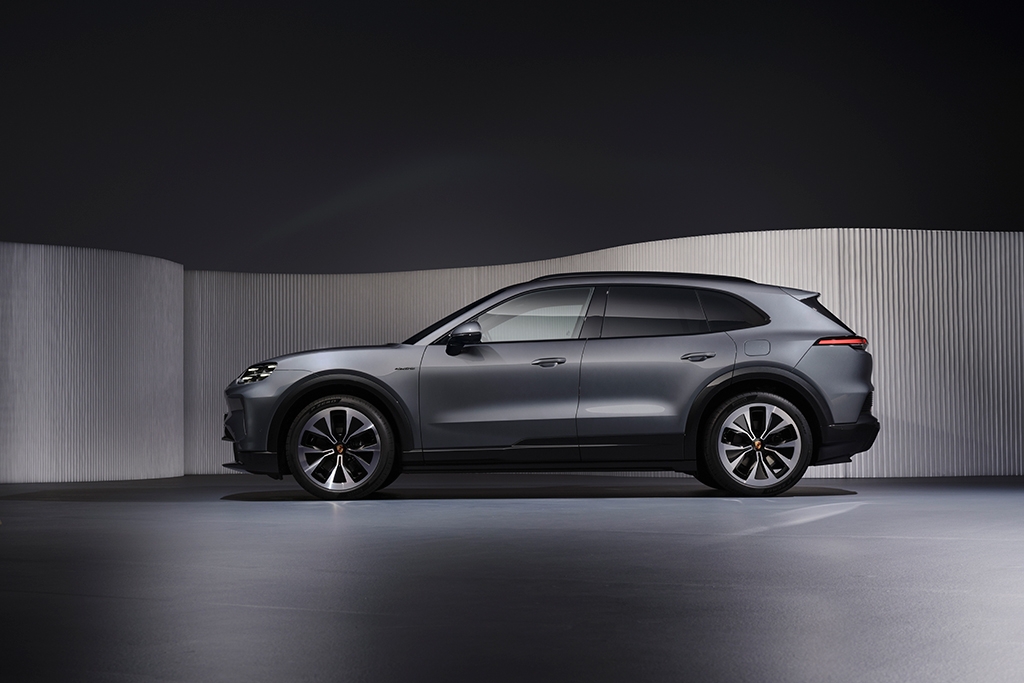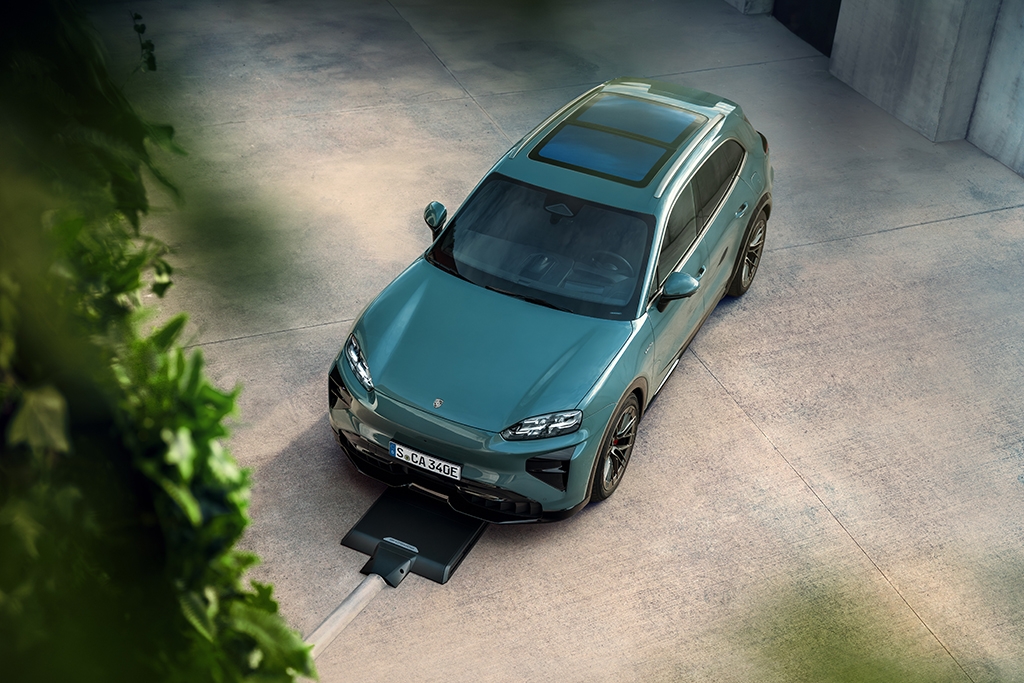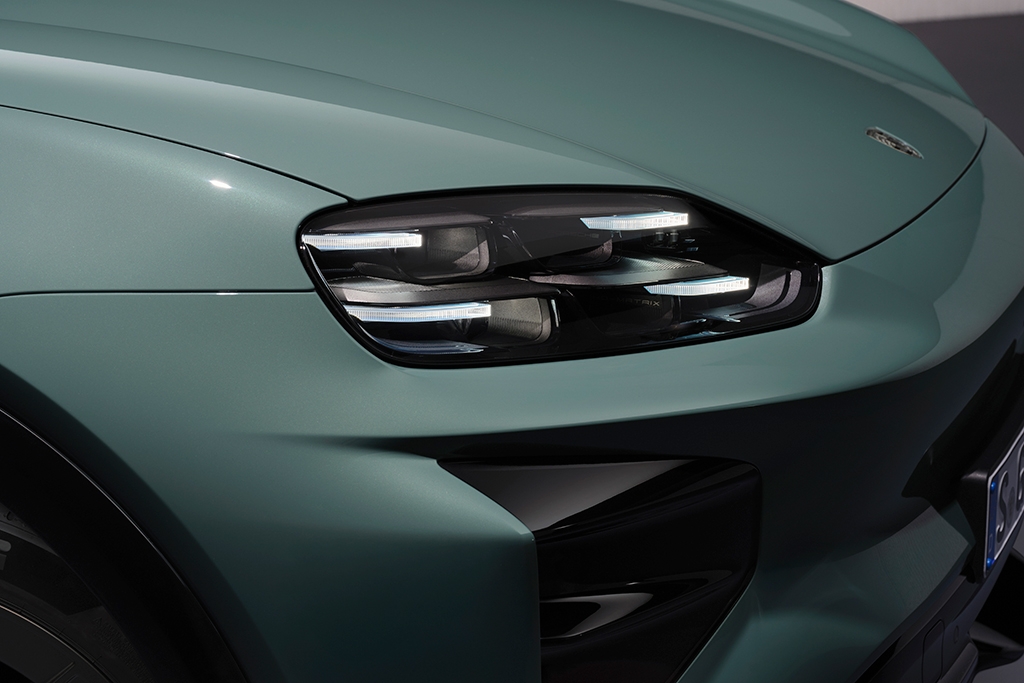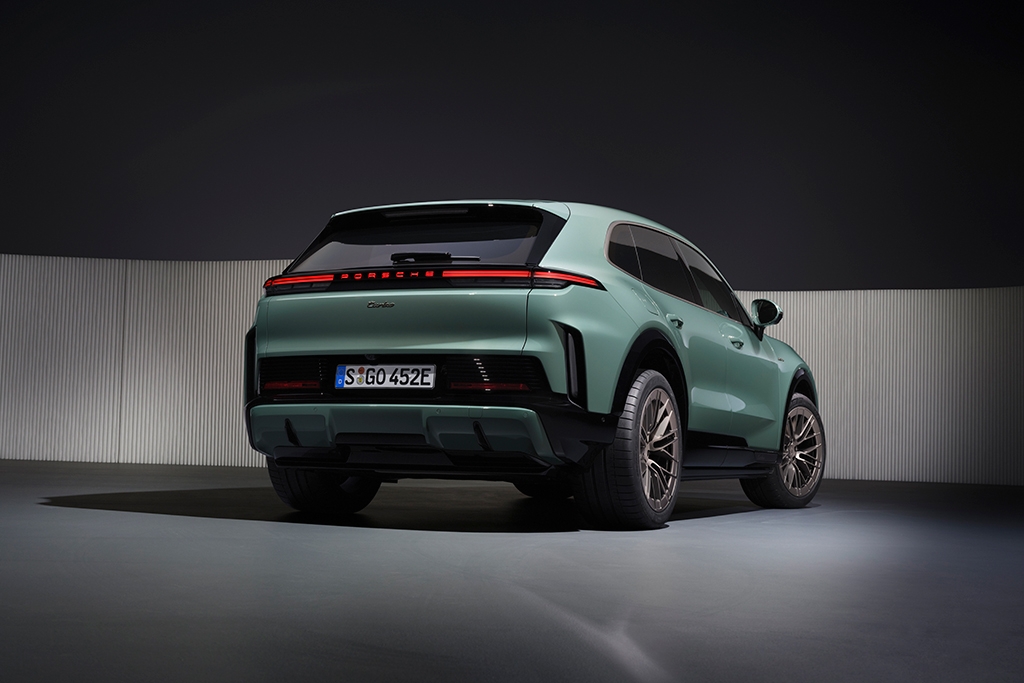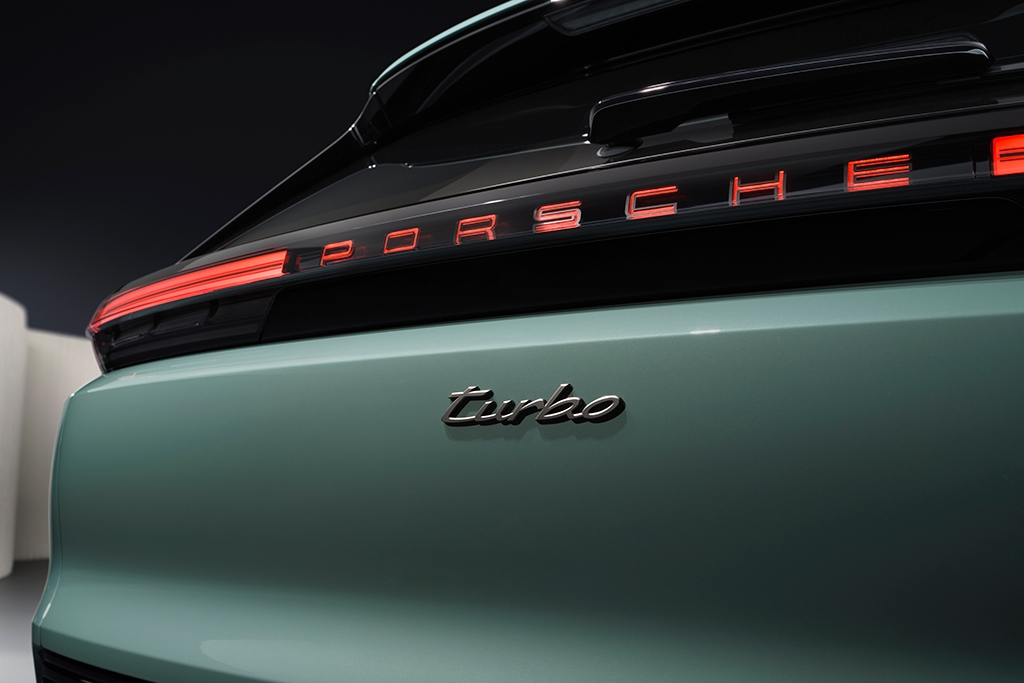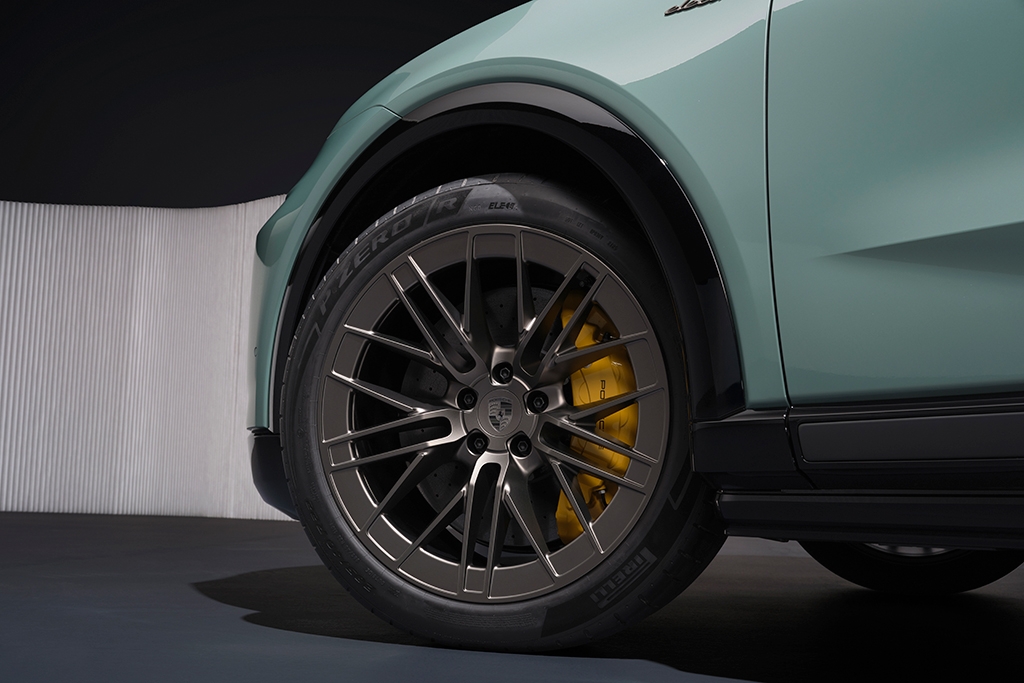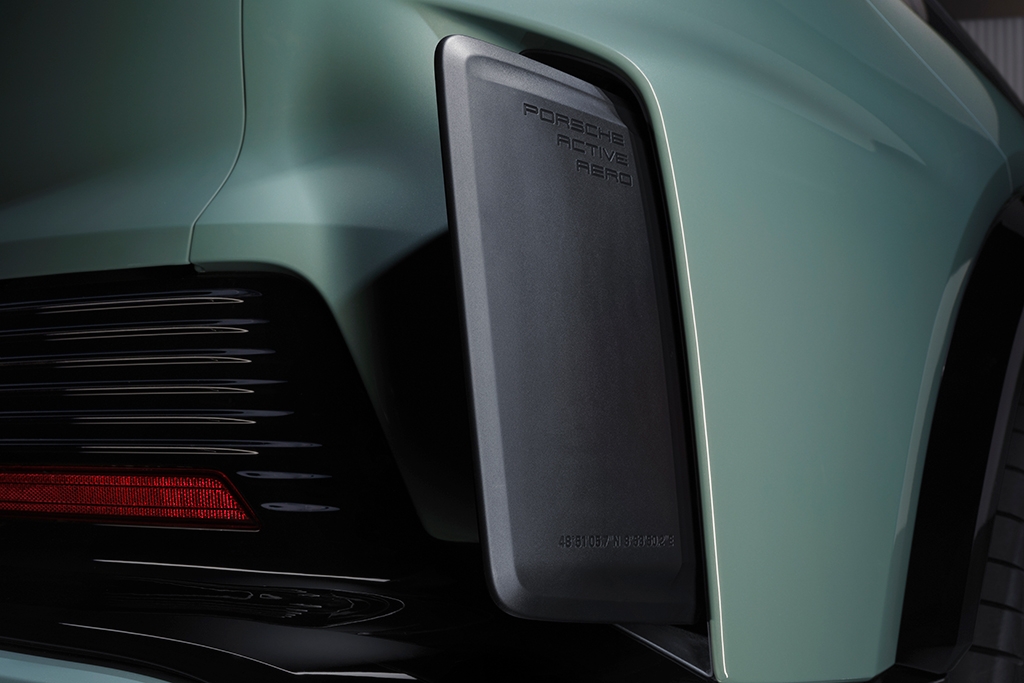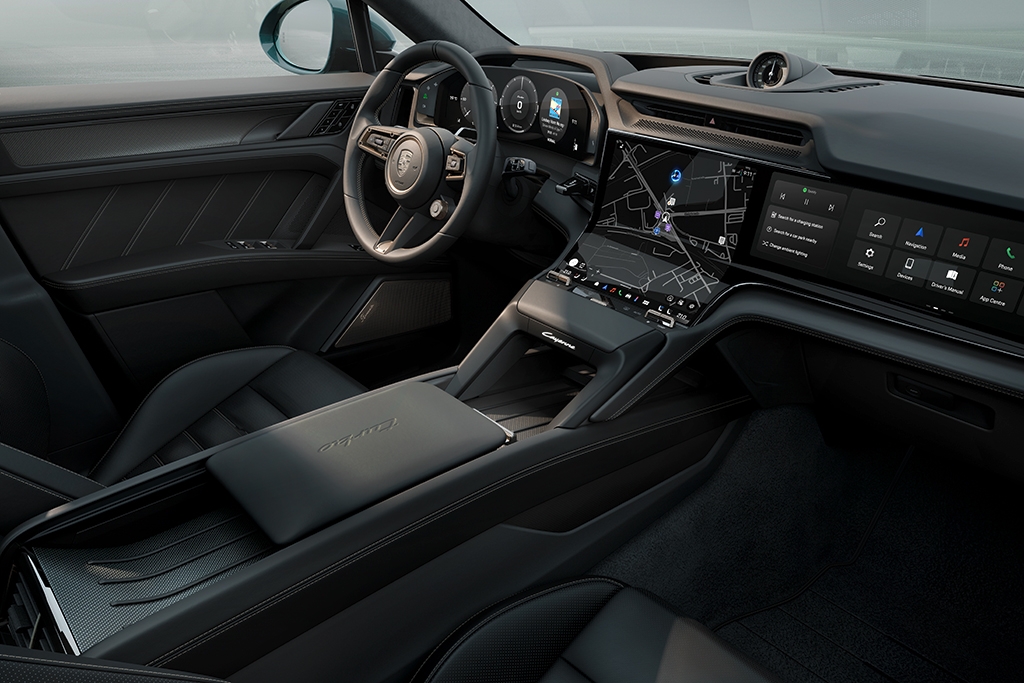Porsche unveils first-ever Cayenne Electric
19 Nov 2025|3,260 views
It's hard to imagine it now, but high-end performance SUVs were a rarity in the early 2000s - somewhat blasphemous even - when sedans still ruled the roads. All that changed, of course, when Porsche unleashed the Cayenne to the world, and now, Stuttgart is keen to rewrite the rules of the game again: With the first ever Porsche Cayenne Electric.
The Cayenne Electric arrives after months of Porsche teasing its tech, including a massive curved touchscreen on its dash and inductive charging capabilities that will see the car's battery topped up without needing to plug it in (more on both later).
But arguably headlining the news of its official premiere now is its power: A whopping maximum of 850kW (1140bhp) and 1,500Nm of torque, making this the most powerful production Porsche ever (yes, surpassing even the Taycan Turbo GT). You'll find that on the Cayenne Turbo Electric - the more potent of the two variants Porsche has confirmed at launch (the other being the standard Cayenne Electric) - when Launch Control is activated.
With this amount of power on tap, the Cayenne Turbo Electric demolishes the century sprint in just 2.5 seconds, and can go from 0-200km/h in just 7.4 seconds, before it levels out at an electronically limited 260km/h at full tilt. And even in normal conditions, the car's nominal output of 630kW is already impressive.
Even the standard Cayenne Electric is no slouch, though, boasting more than 400bhp and a century sprint timing of under five seconds
Unsurprisingly, power comes from two electric motors that send power to all four wheels, but Porsche has specifically credited its motorsport-derived tech for the Cayenne Turbo Electric's astounding performance. Its rear motor features direct oil cooling, which is purported to ensure a consistently high level of power and efficiency.
Those who don't need the mind-boggling performance of the Cayenne Turbo Electric, though, should find themselves plenty satisfied with the standard Cayenne Electric, which gets up to 300kW in normal operation. Launch Control once more ups the stakes, and pushes output up to 325kW and 835Nm of torque, allowing it accelerate from 0-100km/h in just 4.8 seconds before hitting a top speed of 230km/h.
Still, it's not just how much power the Cayenne Electric is capable of, but how much energy it can recover that Porsche is touting.
Digging once again into know-how gleaned from its Formula E presence, the SUV is purported to boast "leading energy recovery figures", with up to 600kW of recuperative power possible upon deceleration. Porsche believes that you won't even be touching the physical brakes most of the time - approximately 97% of all braking operations can be executed via regen with its electric motors - but you can still opt for your Cayenne Turbo Electric with carbon ceramic brakes if you want.
Beyond these new innovations, there's plenty of driving tech available on both variants. These include the brand's electronic Porsche Traction Management (ePTM) system and adaptive air suspension with Porsche Active Suspension Management (PASM) as standard; and rear-wheel steering and Porsche Active Ride as options. To handle all its power, the Cayenne Turbo Electric also gets a limited slip rear differential.
Unsurprisingly, the Cayenne Electric bursts onto the scene with a powerful 800-volt platform, as well as a large battery that gives both variants impressive driving range.
The latter is a 113kWh item that provides a WLTP-rated 642km on the Cayenne Electric, and 623km on the Cayenne Turbo Electric, while supporting rapid DC charging at up to 390kW. At this rate, its state of charge can go from 10 to 80% in just 16 minutes. Interestingly, Porsche has gone on to share that its own tests have seen charging speeds eclipse the 400kW barrier with the Cayenne Electric's battery in its most optimal temperature window.
The bigger news, as mentioned above, is the fact that you can wirelessly charge your Cayenne Electric up if you wish. Offered optionally, the feature allows drivers to recharge their cars at up to 11kW simply by parking above an inductive floor plate - no cables, and no additional steps required.
Bulging front wheel arches and this four-point light signature are known Porsche hallmarks, but the Cayenne Electric's rear is quite unlike what we've seen for the model
The Cayenne Electric packs so much tech and power that it's easy to overlook its styling on first glance, but here, the SUV also marks a significant evolution over its combustion-powered predecessors.
Bulging front arches wheel arches and the four-point light signature in the car's head lights make the Cayenne Electric's immediately clear from the front, but the rear is a much cleaner affair than what we've see in the Cayenne's long lineage so far.
Here, the muscular styling of the Cayenne Electric is brought to the fore, and emphasised by an almost full-length light bar bisected illuminated Porsche lettering. As we’re getting accustomed to, you’ll get special 'Turbonite' accents on the Cayenne Turbo Electric.
Surprisingly, this new Cayenne is impressively aerodynamic despite its stocky outlook: It boasts a drag coefficient of just 0.25Cd, rivalling the likes of the BMW iX. Some of the credit here is due to air curtains up front, an almost sealed-off underbody, aero wheels, and a chunky rear diffuser.
These features are largely targeted at boosting range and efficiency. To aid the car's performance, however, there are a number of active aero elements here, including movable cooling air flaps on the car's nose, and an adaptive roof spoiler.
Again, the Cayenne Turbo Electric comes with its own top-shelf goodies (and mark our words that this might come to be of its most defining visual features): A pair of active aeroblades flanking its lower rear, which extend the lateral tear-off edges and improve the ‘flow characteristics’, thus contributing to increased range at higher speeds.
Amidst these new design cues, Porsche has made sure to make the Cayenne Electric larger than its forebears. In fact, it's a whole 55mm longer than the previous Cayenne, with its 3,023mm wheelbase marking a nearly 13cm increase. Porsche states that the growth spurt has allowed it to offer more space and comfort to passengers in the rear, while the Cayenne Electric's bespoke architecture gives it a 90-litre frunk, on top of a cavernous 781-litre boot at the rear.
But back to the interior again - the Cayenne Electric debuts a new 'Porsche Driver Experience' for the brand by busting out perhaps the most extensively digitalised dashboard we’ve seen from Stuttgart yet. The crowning jewel here, of course, is a new ‘Flow Display’: A curved touch OLED panel that blends into the centre console, and which houses most of your car and driving settings.
This is paired with a 14.25-inch driver’s display, and can be further augmented both by an optional 14.9-inch passenger display and a head-up display with AR tech.
While it was previously unclear if Porsche would continue throwing its weight and resources behind combustion-powered iterations of the Cayenne (it had only stated that it would continue selling the pre-existing generation alongside the Cayenne Electric), the official release of the latter now puts its direction in clearer focus.
Speaking on the premiere, Matthias Becker, Member of the Board of Management, Sales and Marketing, promised that the brand "will continue to develop the Cayenne with efficient combustion and hybrid drive systems well into the next decade".
Continuing, he added that this strategy would be consistent across the brand's entire model portfolio, stating: "In every segment in which we are represented, customers will in future have the choice between fully electric and combustion-engined powertrains."
The Porsche Cayenne Electric is now available for order in Singapore, with prices starting at $372,788 for the standard variant, and at $668,288 for the Cayenne Turbo Electric, both without COE. Given what we've seen Porsche do with the Macan Electric, don't be surprised to also see the arrival of a new entry-level, rear-wheel drive variant in the future.
It's hard to imagine it now, but high-end performance SUVs were a rarity in the early 2000s - somewhat blasphemous even - when sedans still ruled the roads. All that changed, of course, when Porsche unleashed the Cayenne to the world, and now, Stuttgart is keen to rewrite the rules of the game again: With the first ever Porsche Cayenne Electric.
The Cayenne Electric arrives after months of Porsche teasing its tech, including a massive curved touchscreen on its dash and inductive charging capabilities that will see the car's battery topped up without needing to plug it in (more on both later).
But arguably headlining the news of its official premiere now is its power: A whopping maximum of 850kW (1140bhp) and 1,500Nm of torque, making this the most powerful production Porsche ever (yes, surpassing even the Taycan Turbo GT). You'll find that on the Cayenne Turbo Electric - the more potent of the two variants Porsche has confirmed at launch (the other being the standard Cayenne Electric) - when Launch Control is activated.
With this amount of power on tap, the Cayenne Turbo Electric demolishes the century sprint in just 2.5 seconds, and can go from 0-200km/h in just 7.4 seconds, before it levels out at an electronically limited 260km/h at full tilt. And even in normal conditions, the car's nominal output of 630kW is already impressive.
Even the standard Cayenne Electric is no slouch, though, boasting more than 400bhp and a century sprint timing of under five seconds
Unsurprisingly, power comes from two electric motors that send power to all four wheels, but Porsche has specifically credited its motorsport-derived tech for the Cayenne Turbo Electric's astounding performance. Its rear motor features direct oil cooling, which is purported to ensure a consistently high level of power and efficiency.
Those who don't need the mind-boggling performance of the Cayenne Turbo Electric, though, should find themselves plenty satisfied with the standard Cayenne Electric, which gets up to 300kW in normal operation. Launch Control once more ups the stakes, and pushes output up to 325kW and 835Nm of torque, allowing it accelerate from 0-100km/h in just 4.8 seconds before hitting a top speed of 230km/h.
Still, it's not just how much power the Cayenne Electric is capable of, but how much energy it can recover that Porsche is touting.
Digging once again into know-how gleaned from its Formula E presence, the SUV is purported to boast "leading energy recovery figures", with up to 600kW of recuperative power possible upon deceleration. Porsche believes that you won't even be touching the physical brakes most of the time - approximately 97% of all braking operations can be executed via regen with its electric motors - but you can still opt for your Cayenne Turbo Electric with carbon ceramic brakes if you want.
Beyond these new innovations, there's plenty of driving tech available on both variants. These include the brand's electronic Porsche Traction Management (ePTM) system and adaptive air suspension with Porsche Active Suspension Management (PASM) as standard; and rear-wheel steering and Porsche Active Ride as options. To handle all its power, the Cayenne Turbo Electric also gets a limited slip rear differential.
Unsurprisingly, the Cayenne Electric bursts onto the scene with a powerful 800-volt platform, as well as a large battery that gives both variants impressive driving range.
The latter is a 113kWh item that provides a WLTP-rated 642km on the Cayenne Electric, and 623km on the Cayenne Turbo Electric, while supporting rapid DC charging at up to 390kW. At this rate, its state of charge can go from 10 to 80% in just 16 minutes. Interestingly, Porsche has gone on to share that its own tests have seen charging speeds eclipse the 400kW barrier with the Cayenne Electric's battery in its most optimal temperature window.
The bigger news, as mentioned above, is the fact that you can wirelessly charge your Cayenne Electric up if you wish. Offered optionally, the feature allows drivers to recharge their cars at up to 11kW simply by parking above an inductive floor plate - no cables, and no additional steps required.
Bulging front wheel arches and this four-point light signature are known Porsche hallmarks, but the Cayenne Electric's rear is quite unlike what we've seen for the model
The Cayenne Electric packs so much tech and power that it's easy to overlook its styling on first glance, but here, the SUV also marks a significant evolution over its combustion-powered predecessors.
Bulging front arches wheel arches and the four-point light signature in the car's head lights make the Cayenne Electric's immediately clear from the front, but the rear is a much cleaner affair than what we've see in the Cayenne's long lineage so far.
Here, the muscular styling of the Cayenne Electric is brought to the fore, and emphasised by an almost full-length light bar bisected illuminated Porsche lettering. As we’re getting accustomed to, you’ll get special 'Turbonite' accents on the Cayenne Turbo Electric.
Surprisingly, this new Cayenne is impressively aerodynamic despite its stocky outlook: It boasts a drag coefficient of just 0.25Cd, rivalling the likes of the BMW iX. Some of the credit here is due to air curtains up front, an almost sealed-off underbody, aero wheels, and a chunky rear diffuser.
These features are largely targeted at boosting range and efficiency. To aid the car's performance, however, there are a number of active aero elements here, including movable cooling air flaps on the car's nose, and an adaptive roof spoiler.
Again, the Cayenne Turbo Electric comes with its own top-shelf goodies (and mark our words that this might come to be of its most defining visual features): A pair of active aeroblades flanking its lower rear, which extend the lateral tear-off edges and improve the ‘flow characteristics’, thus contributing to increased range at higher speeds.
Amidst these new design cues, Porsche has made sure to make the Cayenne Electric larger than its forebears. In fact, it's a whole 55mm longer than the previous Cayenne, with its 3,023mm wheelbase marking a nearly 13cm increase. Porsche states that the growth spurt has allowed it to offer more space and comfort to passengers in the rear, while the Cayenne Electric's bespoke architecture gives it a 90-litre frunk, on top of a cavernous 781-litre boot at the rear.
But back to the interior again - the Cayenne Electric debuts a new 'Porsche Driver Experience' for the brand by busting out perhaps the most extensively digitalised dashboard we’ve seen from Stuttgart yet. The crowning jewel here, of course, is a new ‘Flow Display’: A curved touch OLED panel that blends into the centre console, and which houses most of your car and driving settings.
This is paired with a 14.25-inch driver’s display, and can be further augmented both by an optional 14.9-inch passenger display and a head-up display with AR tech.
While it was previously unclear if Porsche would continue throwing its weight and resources behind combustion-powered iterations of the Cayenne (it had only stated that it would continue selling the pre-existing generation alongside the Cayenne Electric), the official release of the latter now puts its direction in clearer focus.
Speaking on the premiere, Matthias Becker, Member of the Board of Management, Sales and Marketing, promised that the brand "will continue to develop the Cayenne with efficient combustion and hybrid drive systems well into the next decade".
Continuing, he added that this strategy would be consistent across the brand's entire model portfolio, stating: "In every segment in which we are represented, customers will in future have the choice between fully electric and combustion-engined powertrains."
The Porsche Cayenne Electric is now available for order in Singapore, with prices starting at $372,788 for the standard variant, and at $668,288 for the Cayenne Turbo Electric, both without COE. Given what we've seen Porsche do with the Macan Electric, don't be surprised to also see the arrival of a new entry-level, rear-wheel drive variant in the future.
Latest COE Prices
December 2025 | 1st BIDDING
NEXT TENDER: 17 Dec 2025
CAT A$105,413
CAT B$123,900
CAT C$76,501
CAT E$123,000
View Full Results Thank You For Your Subscription.


























